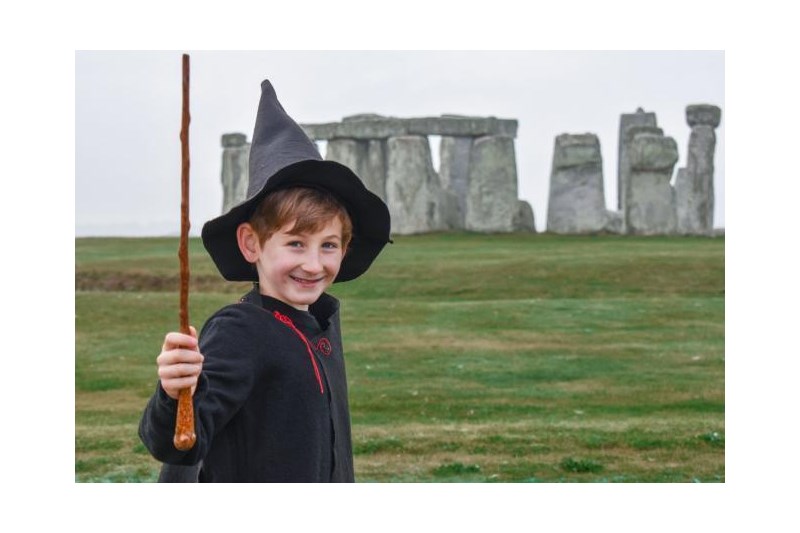Gallery
Photos from events, contest for the best costume, videos from master classes.












Halloween is a day of tricks, treat, sweets, pumpkin carving, cider drinking and costume wearing; but the holiday has evolved immensely from its pagan beginnings. Human Sacrifice at Stonehenge by ancient and modern pagans? It has never been proven that there were human sacrifices by Celtic peoples to celebrate Samhain (sow-en). However, we do The story of Halloween begins over 2,000 years ago with the ancient Celtic people, who lived in what is now Ireland, the United Kingdom, and northern France. The Celts followed a pagan religious system led by a class of priests known as the Druids. Their calendar revolved around the agricultural cycles and seasonal changes, with Samhain being Halloween, or the ancient Samhain, is considered the time of year when the veil between our world and the spirit world is at its thinnest. As darkness falls and families light their pumpkin Jack-o'-lanterns, they are, perhaps unknowingly, repeating the ancient traditions of honoring the dead and marking the beginning of the ‘dark half’ of While Samhain is still celebrated among pagans in jubilant social gatherings across the globe, the holiday also directly inspired many of the Halloween traditions in practice today, including trick-or-treating and carving Jack-o-Lanterns. Explore the vibrant rituals of this ancient Halloween predecessor in the gallery below. It was May 13 in the year 609 that Pope Boniface IV declared a celebration called All Saints’ Day, also called All-hallows or All-hallowmas in Middle English; the day before it was thus known as Halloween Owes Its Tricks and Treats to the Ancient Celtic New Year’s Eve. During Samhain, the deceased came to Earth in search of food and comfort, while evil spirits, faeries and gods came in Yet because Halloween is popularly associated with the supernatural, it is often believed to have strong pagan roots that were never eliminated by the holiday’s subsequent Christianization. Some folklorists have detected its origins in the Roman feast of Pomona, the goddess of fruits and seeds, or in the festival of the dead called Parentalia. Celtic Origins. The origins of Halloween can be traced back all the way to the ancient Celtic festival known as Samhain – pronounced ‘sow-in’ in Gaelic language. It was originally an event that marked the end of the harvest season and the beginning of winter in Ireland. The day after, on 1 November, would mark the ancient Celts ’ new year. Thus, Nov. 1 was dedicated to all saints, or “hallows,” an archaic term for holy personages. The night preceding it, Oct. 31, came to be known as All Hallows’ Eve, a name shortened eventually to Halloween. A few centuries later, Nov. 2 was dubbed All Souls’ Day, an opportunity to remember the dead; this evolution meshed well with the Built from a hodgepodge of diverse parts, Halloween is one such tradition that has been continually reinvented since its ancient origins as a Celtic pagan ceremony. Yet beneath the superhero Festive people at Stonehenge, England for the Pagan Winter Solstice Celebration (CC BY-SA 4.0) 2 o’clock on the Pagan Wheel of the Year: Imbolc (Disablot, Brigid’s Day, and Candlemas) Imbolc comes at the first signs of spring. At this time, the supply of food from the previous harvest is running low. The origins of Halloween can be traced back to the ancient Celtic festival of Samhain. Until 2,000 years ago, the Celts lived across the lands we now know as Britain, Ireland and northern France. Embrace the spooky vibe of Halloween with this plush blanket featuring a witches circle surrounding a campfire sitting under a full moon. Perfect for adding a touch of Halloween decor to your home or as a gift for anyone who loves mystical themes and witchy aesthetics. Ideal for Halloween celebrations and witchy enthusiasts. Product features Halloween is a day of tricks, treat, sweets, pumpkin carving, cider drinking and costume wearing; but the holiday has evolved immensely from its pagan beginnings. Human Sacrifice at Stonehenge by ancient and modern pagans? It has never been proven that there were human sacrifices by Celtic peoples to celebrate Samhain (sow-en). However, we do Samhain is a pagan religious festival originating from an ancient Celtic spiritual tradition. In modern times, Samhain (a Gaelic word pronounced “sow‑win”) is usually celebrated from October Understanding Stonehenge. Spirituality was at the heart of Stonehenge from the start. Neolithic and Bronze Age people put an enormous effort into building this extraordinary structure, despite the fact that it serves no known practical function. Many theories have been put forward over the years about the purpose of Stonehenge. Today, we celebrate Halloween, which incorporates elements of Samhain, such as costumes, to ward off evil spirits and the celebration of the supernatural. Winter Solstice and Christmas The Winter Solstice has long been celebrated by various pagan cultures, honoring the return of the sun and the gradual lengthening of days. Druids perform a Samhain or pagan Halloween style blessing ceremony at Stonehenge in Wiltshire. Druids celebrate inclusion of Stonehenge as one of the seven wonders of the modern world Amesbury, UNITED KINGDOM: Druids perform a pagan Samhain blessing ceremony at the Stonehenge monument, in Wiltshire, in southern England, 17 October Stonehenge is a Early Stone Age megalithic monument, close to the town of Amesbury in the English county of Wiltshire and approximately 13 kilometers northwest of Salisbury on the Salisbury Plain. Dating from 2008, the construction of Stonehenge was estimated at 2300 BC, 300 years later than previously believed. Druids perform a Samhain or pagan Halloween style blessing ceremony at Stonehenge in Wiltshire. Druids celebrate inclusion of Stonehenge as one of the seven wonders of the modern world Amesbury, UNITED KINGDOM: Druids perform a pagan Samhain blessing ceremony at the Stonehenge monument, in Wiltshire, in southern England, 17 October
Articles and news, personal stories, interviews with experts.
Photos from events, contest for the best costume, videos from master classes.











